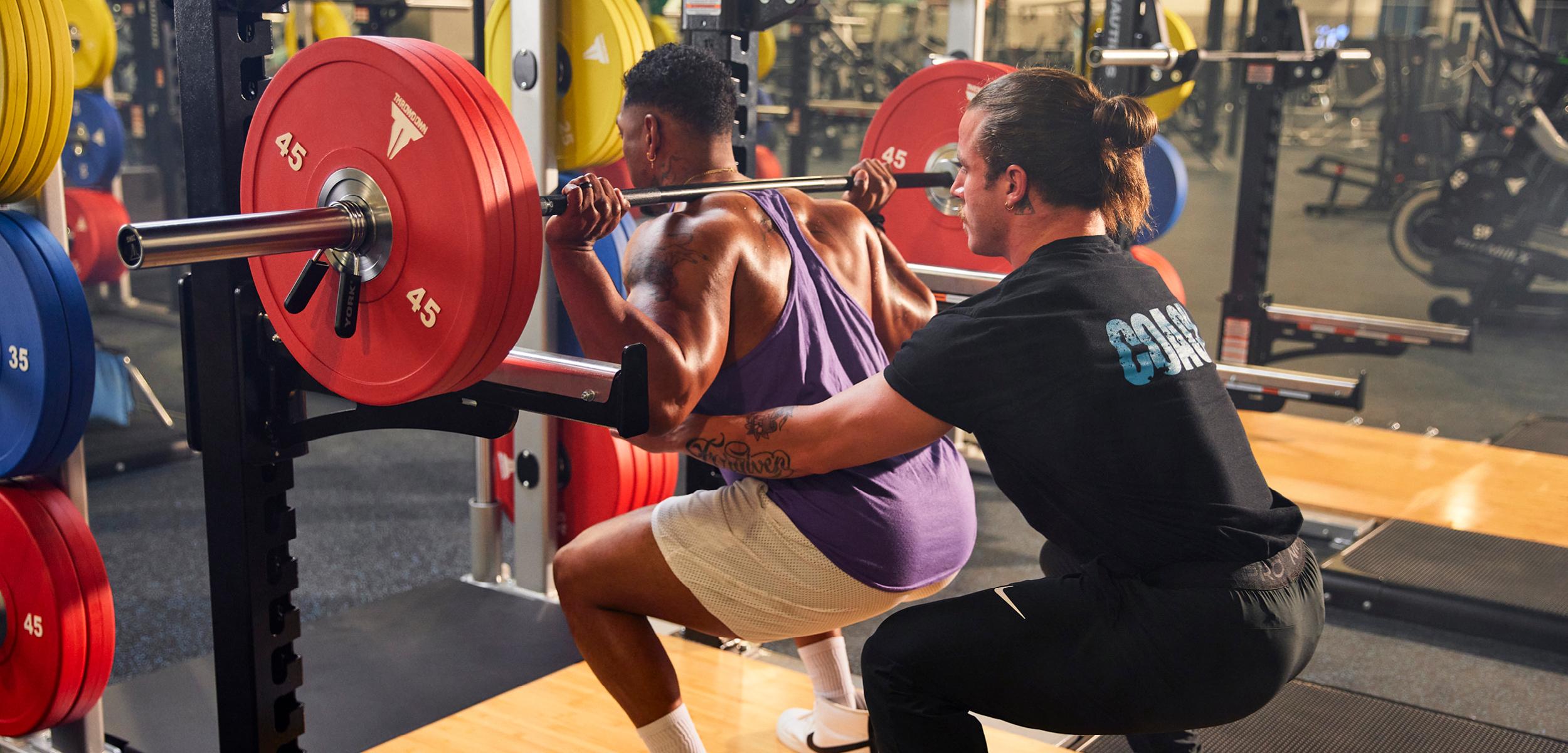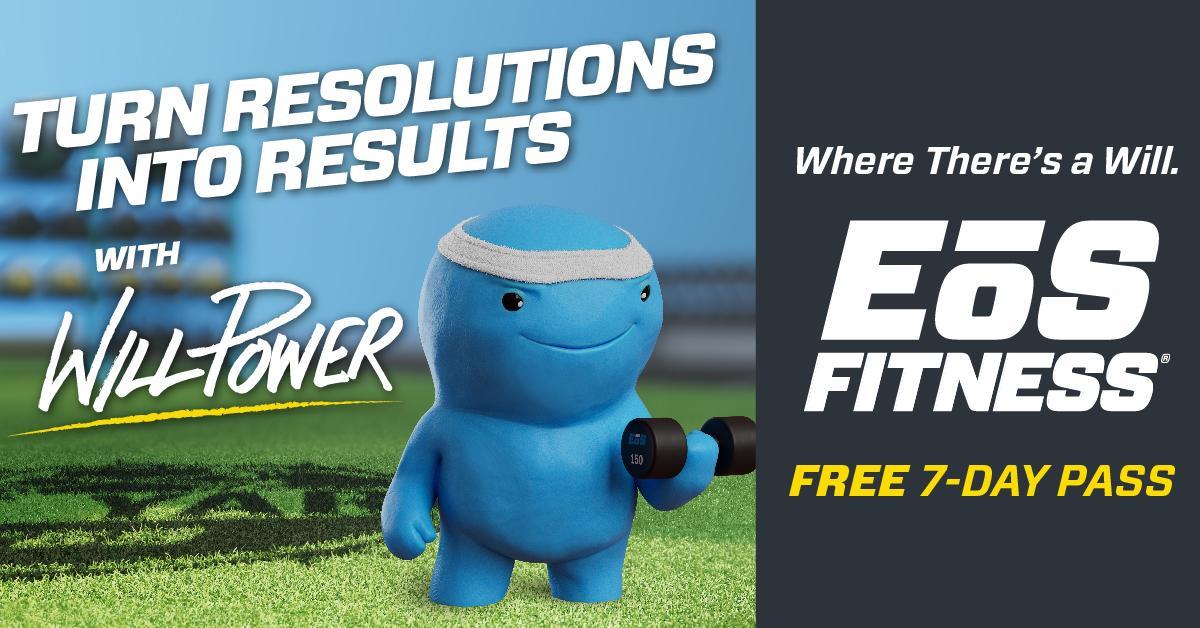HOW MANY SQUATS SHOULD YOU DO? PERFECT YOUR FORM FOR MAXIMUM RESULTS
Fitness Tips
Sep 23, 2024 • 8min read
Wondering how many squats you should do daily to reach your fitness goals? The truth is there’s no one-size-fits-all answer—it depends on your fitness level, goals and experience.
Whether you’re just starting or are a seasoned pro, the number of squats you do should always prioritize proper form. Quality is just as important as quantity, and mastering proper squat technique is essential for building lower body strength, improving mobility and avoiding injury. Squats are a foundational exercise that can boost your overall fitness and with the right approach, you can easily incorporate them into your daily routine!
Ready to drop it like a squat? Let’s dive into the essentials of squat technique.
What You Will Learn
Estimated reading time: [8 minutes]
How Many Squats Should You Do Daily?
When it comes to squats, your daily target will depend on your fitness level, goals and experience. Whether you’re new to working out or a seasoned gym-goer, setting the right number of squats ensures you’re challenging your body without overdoing it. Here’s a breakdown of squat recommendations based on your fitness level:
- Beginner (0-3 months of consistent training): Aim for 15-20 bodyweight squats daily if you’re just starting. Focus on perfecting your form rather than hitting high numbers. Proper technique is the foundation for progress, helping you build strength while avoiding injury. You can perform these squats in a single set or split them up throughout the day.
- Intermediate (3-6 months of consistent training): Increase your daily squat count to 30-50 squats as you gain strength and confidence. At this stage, you might start adding light weights, like a dumbbell or kettlebell, to challenge yourself further. You can also incorporate squat variations, such as sumo squats or jump squats, to keep your routine dynamic and engaging.
- Advanced (6+ months of consistent training): If you’ve consistently worked out for over six months, push your limits with 75-100 squats daily. This can include weighted squats, barbell squats, or combining different squat variations for a more intense workout. At this level, listening to your body and allowing for rest days when needed is essential, especially if you’re incorporating heavy weights.
Step 1: Perfect Your Squat Form
Squats are a powerful exercise, but nailing the proper form is essential to unlock their full potential. Perfecting your squat form helps prevent injury and ensures you’re targeting the right muscles to maximize your strength gains. Let’s start with the basics.
The Stance for a Proper Squat
Begin by standing with your feet shoulder-width apart, with your toes slightly turned out. Keep your heels planted to maintain balance and generate power throughout your movement. This stance creates a strong, stable base, allowing for even weight distribution.
Tip: One common mistake is letting your heels lift off the ground as you lower into a squat. Focus on pressing through your heels as you rise, which helps protect your knees and ensures proper muscle activation.
Knee Alignment During Squats
To protect your knees, ensure they stay aligned with your toes throughout your squat. Your knees should always move in the same direction as your toes, avoiding inward collapse or excessive forward movement past your toes. This alignment distributes force evenly and reduces the strain on your knees.
Tip: Avoid letting your knees cave inward (knee valgus) during the squat, which can lead to injuries. Focus on driving your knees outward as you lower into the squat to engage your glutes and hips, which helps stabilize your form and protect your joints.
Proper Posture During Squats
Stand tall with your shoulders back and chest lifted. Keep your gaze straight ahead or slightly down to maintain a neutral spine and avoid rounding your back. As you squat, ensure your back remains neutral and avoid excessive arching or rounding. Focus on squeezing your shoulder blades together and keeping your ribcage down to maintain an upright posture. This alignment distributes the load evenly, protecting your lower back from strain.
Tip: Avoid rounding your back as you squat, which can lead to strain and injury. Strengthening your core with exercises like planks can also help support proper form.
Engaging All the Right Muscles
The magic of a great squat comes from engaging the correct muscle groups. Tighten your core as you lower to support your lower back, while your quads and glutes power the movement. As you rise, squeeze your glutes to finish strong and maintain control, preventing injury.
Tip: To engage your core, visualize drawing your belly button toward your spine. This cue helps keep your core tight throughout the squat. As you push back up, focus on driving through your heels to activate your glutes and hamstrings. Make every rep count and use this mind-muscle connection to get the most out of each squat!
Squat Depth – How Low Should You Go?
Lower your body until your thighs are parallel to the floor for effective glute, hamstring and quad activation. If you’re flexible enough, go deeper to increase muscle engagement, especially in your glutes. Always prioritize form over depth though, adjusting to your mobility and comfort.
Tip: Struggling to reach parallel? Work on hip stretches and ankle flexibility to improve your range of motion and squat deeper with proper form.
Step 2: Perform a Perfect Squat
Now that you’ve mastered the setup, it’s time to combine all those elements and perform the perfect squat. Understanding movement mechanics is critical to staying safe and getting the most out of this foundational exercise. Here’s your step-by-step guide to achieving squat success.
Descent – How to Lower into a Proper Squat
- Lower down, hinging at your hips and bending your knees and ankles.
- Keep your hips back and down, chest up and shoulders back.
- As you lower, press your knees slightly open.
- Maintain contact between your heels and the floor.
- Mimic the motion of sitting in a chair.
Tip: Engage your core to maintain a neutral spine. Picture holding a tennis ball between your chin and chest to keep your neck aligned and prevent looking too far up or down.
Ascent – Driving Up from Your Squat
- Press into your heels.
- Squeeze your glutes together.
- Continue engaging your core to maintain alignment.
- Keep your knees aligned with your toes.
- Straighten your legs to stand back up.
Tip: At the top of the movement, squeeze your glutes to maximize muscle engagement and solidify your posture. This helps ensure you finish each rep properly, reinforcing good habits for future sets.
Breathing During Your Squat
- Before you begin to lower your squat, take a deep breath through your nose. This breath braces your core and gets your body ready for action.
- As you drive back up from the squat, exhale forcefully through your mouth. This exhale isn’t just about catching your breath—it’s about generating power and keeping your core tight, so you don’t lose stability mid-movement.
Want to take your breathing to the next level? Try practicing diaphragmatic breathing. This means using your diaphragm (the muscle at the base of your lungs) to take deep, powerful breaths. It helps engage your core muscles more effectively and keeps you grounded during every rep. Think of it as the secret sauce to mastering your squat with confidence.
Step 3: Squat Variations to Try
Once you’ve mastered the basic squat, it’s time to level up with some fun and challenging variations! Adding these moves to your routine targets different muscles and keeps your workouts fresh and exciting. If you want to enhance your strength, improve balance or increase flexibility, there’s a squat variation for you!
Goblet Squats
Great for all levels and suitable for beginners and experienced lifters, goblet squats improve posture and core engagement due to their front-loaded position. Plus, they’re beginner-friendly, making them a great addition to any routine.
To perform a goblet squat:
- Hold a dumbbell or kettlebell close to your chest with both hands, elbows pointing down.
- Keep your chest up and spine neutral as you squat.
Sumo Squats
Ready to work those inner thighs? Sumo squats are your go-to move! This variation targets the inner thighs, glutes and hips, making it an excellent exercise for building lower body strength and improving hip mobility. It also adds variety to your routine, ensuring you hit different muscle groups and avoid workout monotony.
To perform a sumo squat:
- Start with your feet wider than shoulder-width apart.
- Turn your toes out at a 45-degree angle.
- As you squat down, push your knees outward and lift your chest.
Single-Leg Squats (Pistol Squats)
If you’re looking for a serious challenge, the single-leg squat (pistol squat) is where it’s at! Pistol squats are fantastic for building unilateral strength (strength on one side of the body) and improving balance. This variation primarily benefits advanced gym-goers and athletes, enhancing stability and muscular control.
To perform a pistol squat:
- Balance on one leg while extending the other leg straight out in front of you.
- Slowly lower yourself into a squat on the standing leg.
- Keep your chest up and arms extended forward for balance.
Wall Squats
Wall squats are a fantastic low-impact exercise that build muscular endurance in your quads, glutes and hamstrings. They’re also great for rehabilitation and strengthening without putting stress on your joints.
To perform a wall squat:
- Lean against a wall with your feet about two feet in front of you.
- Slide down the wall until your thighs are parallel to the floor or go as low as you can safely manage based on your mobility.
- Hold that position.
Get Your Booty in the BBL Studio at EōS Fitness
The journey to stronger glutes and a powerful lower body doesn’t happen overnight, but with consistency, you’ll see progress that makes every rep worth it. Keep things fresh by incorporating different squat variations into your routine, challenge yourself by increasing the intensity over time and remember to celebrate your wins—no matter how small.
Ready to take it up a notch? The BBL Studio at EōS Fitness is designed to help you achieve your lower-body goals with targeted workouts that maximize the effectiveness of every squat. Join the community of fitness enthusiasts at EōS, committed to sculpting a stronger, more defined booty. With our top-tier amenities, expert guidance and motivating environment, you’ll find everything you need to crush your goals and have fun doing it. Ready to start squatting? Visit your nearest EōS Fitness for your Free 7-Day Gym Pass today!





